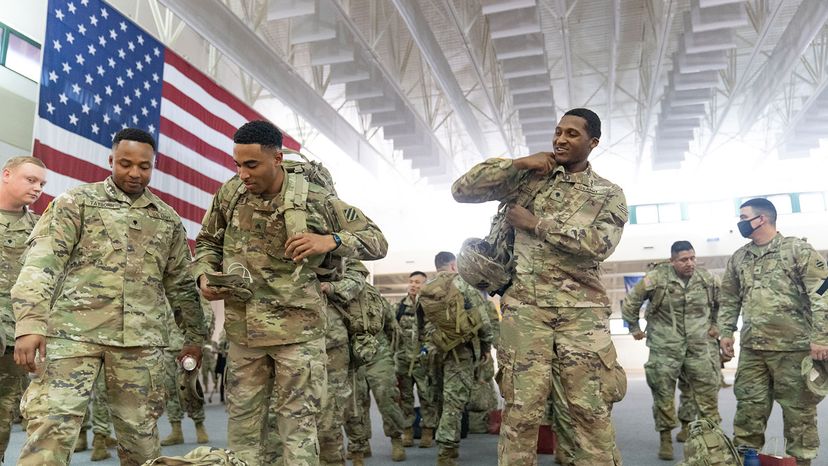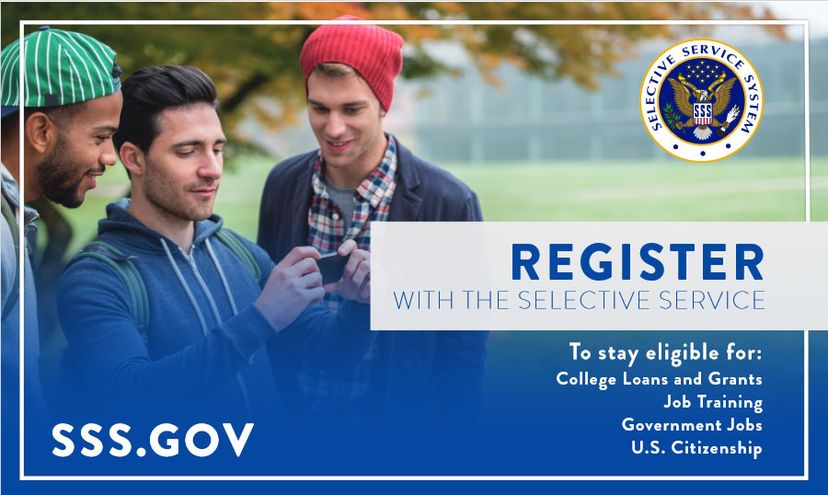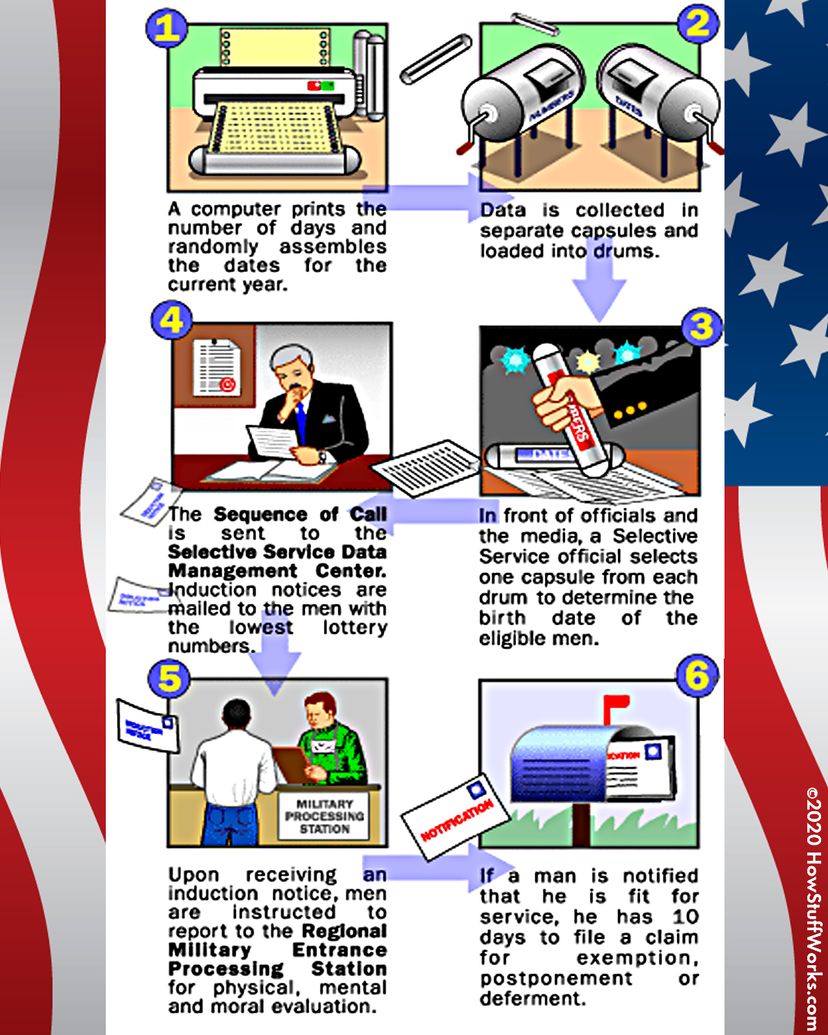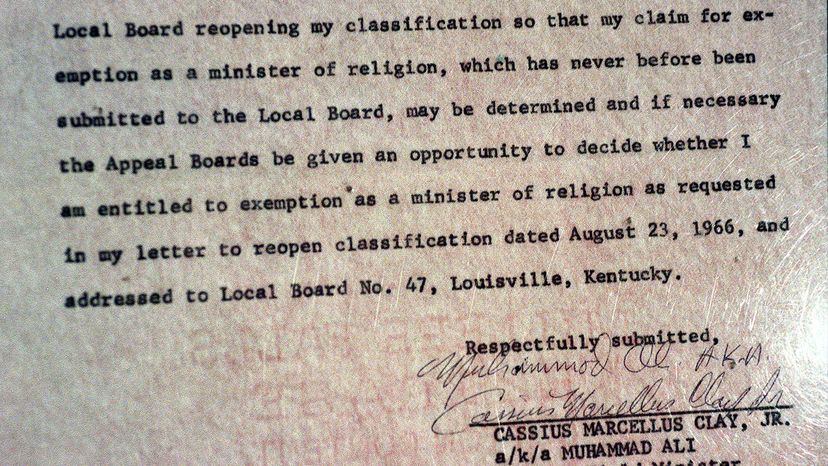Does the Draft Experience Continue During the Darft

According to the U.S. Department of Defense, the United States military as of March 2021 maintains a force of over 1.3 million active-duty personnel across the Army, Air Force, Marines, Coast Guard and Navy. In times of relative peace, this is sufficient to protect U.S. interests at home and abroad.
But when the United States engages in a larger scale operation, the military may need to call up reserve forces. In a major conflict, the United States may even institute the draft, drawing soldiers from the general civilian population.
In this article, we'll find out what would happen if the president were to reinstate the draft today. We'll also see what the Selective Service System does in times of peace to prepare for a draft in the future.
Registration for the U.S. Draft

The idea of a military draft, also called conscription, has been around in one form or another since ancient times. In its relatively short history, the United States has implemented several different conscription systems to fill its military ranks in both peacetime and wartime. Currently, the United States is not practicing conscription; it has an all-volunteer military, meaning active troops serve on their own accord. By offering a range of benefits to enlistees, the military can recruit enough troops to fill its ranks, at least during times of peace. Additionally, the United States maintains a volunteer National Guard and a corps of volunteer reserve troops. These highly trained forces stand ready to assist the military at the president's command.
But as an insurance policy, the government also maintains the Selective Service System (SSS). Its primary purpose is to provide the military with additional manpower if volunteer forces are not sufficient to handle a war or other national emergency. In other words, the agency is in charge of overseeing the draft (conscription) whenever it is reinstated. Its secondary purpose is to maintain an alternative draft-time service program for conscientious objectors, citizens who are eligible for the draft but will not engage in combat because of their moral beliefs.
In times of peace, the SSS's main task is to put together a list of potential draftees in the United States. The potential draftee pool is made up of male U.S. residents between the ages of 18 and 25. Under current law, women cannot be drafted (see our sidebar for more details on this). A few select groups of men are also excused automatically. These groups include:
- Men who are actively serving in the military
- Men who are attending a military service academy or select university military officer procurement program
- Foreign citizens in the United States on valid student, visitor or diplomatic visas
- Certain foreign agricultural workers
- Men who are in a hospital or psychiatric institution
- Disabled men who are continually confined to a hospital or institution
- Incarcerated men
- People who are born female and have changed their gender to male
All other men between 18 and 25 are legally required to register with the SSS within 30 days of reaching eligibility. Men can register via mail, over the internet, at the post office or with a high school Selective Service Registrar (click here for details on registration). The SSS keeps the names and addresses of all registered men on file so they can be called up easily if the draft is reinstated. Most U.S. citizens become eligible on their 18th birthday; others become eligible the day they are no longer exempt (the day they drop out of a military academy, for example). Eligible men entering the U.S. are required to register within 30 days of entering the country.
The government can prosecute a potential draftee who does not register with the SSS. If convicted, the man would face up to five years in jail and a fine of up to $250,000. Today, the government is unlikely to take such extreme action. Instead, it encourages registration by withholding government benefits from potential draftees in violation. This includes federal financial aid for school, federal job training and some federal employment. Additionally, all eligible men must register before gaining U.S. citizenship. The SSS reports that 92 percent of eligible men (nearly 17 million men) were registered as of 2019.
The SSS will accept late registration, as long as the man is still under 26. If a man fails to register before his 26th birthday, he may be permanently excluded from some federal benefits.
Registering with the SSS does not necessarily mean you will be drafted when a war breaks out; it is merely a system for keeping your name and address on file. In the next section, we'll see what would actually happen if the draft were reinstated.
Now Is the Time

As we saw in the last section, the United States military normally operates using only volunteer troops. In the event of a conflict or other anomalous situation, the president may call in reserve troops and the National Guard to supplement military personnel on active duty.
If the military were to require additional troops after all available reserve personnel had been called to active duty, Congress and the president would have to consider reinstating the draft. To reinstate the draft, Congress would have to pass appropriate legislation, and the president would have to approve that legislation. After the president enacted this legislation, the Selective Service System would switch gears rapidly, going from "registration mode" to "draft mode."
The first order of business would be to conduct a national draft lottery. The lottery would determine the order in which eligible men would be drafted. The government would start with all eligible men who turn 20 in the year of the draft.
The drafting order within this group would be determined by an impartial, random lottery system developed by the National Institute of Standards and Technology (NIST). This system has several steps:
- A computer prints out every date in the current year in random order and places these dates in small capsules.
- The computer then prints out numbers 1 through 365 (366 in a leap year) in random order and places these numbers in small capsules.
- The capsules containing dates are loaded into one drum, in no particular order, and the capsules containing numbers are loaded into another drum.
- Official observers inspect this process and the drums to make sure everything goes correctly.
- With reporters, television cameras, government officials and impartial observers present, a Selective Service official pulls one capsule from the drum containing dates and one capsule from the drum containing numbers. The number determines when men with that birthday will receive induction notices. For example, if an official drew the date April 22 and the number 42, then men turning 20 years old April 22 of the current year would be the 42nd group to receive induction notices. The official keeps drawing pairs of dates and numbers until all dates are put into sequence.
- This sequence of call is sent to the Selective Service Data Management Center in Palatine, Illinois, which immediately mails induction notices to men with the lowest lottery numbers.
- The SSS calls in select military reservists and volunteer board members to staff agency offices and appeal boards around the country.
- When men receive their induction notices, they report to a regional military entrance processing station for physical, psychological, mental and moral evaluations. The purpose of these evaluations is to determine whether or not a man is fit to serve in the military.
- When a man is notified that he is fit for service, he has 10 days to file a claim for exemption, postponement or deferment (more on this in the next section).

© 2020 HowStuffWorks
If Congress and the president were to reinstate the draft, they would request that the Selective Service draft a certain number of troops. The SSS would proceed through the list of eligible men until they reached the requested number. As the crisis continued, the president and Congress might request additional troops, and the SSS would send out more induction notices.
If more troops were needed after processing all eligible 20-year-old men, the SSS would hold another lottery for 21-year-olds. They would then proceed to 22-year-olds, then 23-year-olds, then 24-year-olds, then 25-year-olds. Finally, if more troops were needed, they would proceed to 19-year-olds, then 18-year-olds. If the military still needed more troops, the president and Congress would have to extend the draft age.
A man who receives an induction notice and is deemed fit for service does not necessarily have to go to war. Next, we'll find out about the exemptions, deferments and postponements the government allows.
Special Classifications
While the U.S. government expects most able young men to serve in the military if asked, it does allow for a few exceptions. If the draft were to be reinstated, the government would activate a classification program to define all exceptions as well as the various forms of service.
A man who is sent an induction notice and is found fit for service would automatically be classified as 1-A. This means he is available for military service immediately. After receiving the induction notice, if he wanted to receive an exemption, deferment or postponement he would have 10 days to file a claim form for reclassification. The SSS would then send the man a documentation form, which he would use to support his claim for reclassification.
There are a fairly large number of classifications, all of which you can read about at the Selective Service System site. But generally speaking, there are only a few groups that are eligible for exemption, deferment or postponement. These include:
- High school students: A high school student younger than age 20 may postpone his induction as long as he is a full-time student doing satisfactory work. High school students who turn 20 in their senior year may also postpone their induction.
- College students: A college senior may postpone his induction for the remainder of the academic year. Freshmen, sophomores and juniors may postpone their induction until the end of the semester.
- Religious ministers: Practicing religious ministers are exempt from military service.
- Ministerial students: Full-time students working toward becoming ordained ministers in a recognized religion are deferred from service.
- Armed forces on active duty: Military personnel, including active National Guardsmen, Reservists, and select personnel in the National Oceanic and Atmospheric Administration or the Public Health Service are deferred from induction as they are already serving the country.
- Select government officials: Judges and a range of elected officials, including governors, mayors and legislators (both state legislators and U.S. congressmen) are all exempt until their terms of office are over.
- Conscientious objectors: Men who are opposed to engaging in combat or serving in the military at all due to deeply held religious or moral beliefs may be specially assigned. They still have to register though.
Reclassification claims based on simple facts (high school postponements, for example) are handled by the area's SSS office. Reclassification claims that require a subjective decision (conscientious objector or hardship deferment status, for example) are passed on to the local Selective Service board.
Local boards comprise five volunteer civilians appointed by the director of Selective Service. Each board serves all the eligible men residing in a relatively small area. In a draft, a board's job is to review the evidence presented by men seeking reclassification and to decide whether or not those men should be reclassified. For certain reclassifications (conscientious objector status, for example) the man must appear before the board personally. Even when it is not required, a man still has the option to appear before the board.
A board's most difficult decisions are usually regarding conscientious objector status. In the next section, we'll look at this classification in greater detail.
Conscientious Objectors to the Draft

As we saw in the last section, conscientious objectors are eligible men who are opposed to serving in a war because it is against their deeply held moral or religious beliefs. The government has two main classifications for conscientious objectors:
- Classification 1-A-O: Men who are morally opposed to serving in combat
- Classification 1-O: Men who are morally opposed to serving the military in any capacity
In a draft, men classified as 1-A-O would be assigned to military service not involving combat or weaponry. Men classified as 1-O would be assigned to the alternative service program run by the SSS. This program assigns conscientious objectors to work with local employers in fields that would contribute to the nation's well-being. Men in the alternative service program might assist in health care, education, conservation or a number of other areas.
A man can only be reclassified as a conscientious objector if he demonstrates that his opposition to war is based on moral, ethical or religious beliefs, not on political beliefs. The man must be opposed to all war, not only the specific war at hand.
There are a number of ways for a man to persuade the board of his beliefs. First of all, he would have to explain his convictions, and how these feelings affect his life, in a detailed written statement. When he appeared before the board, he would answer any questions they might have. Most likely, he would ask several friends or acquaintances to report their impressions of him, either in person or in writing. He could also present historical evidence of his beliefs, such as membership in an anti-war organization or church dedicated to peace. Ideally, he would show that he had held these beliefs before he received a notice of induction.
If the board members were convinced of his sincerity, they would reclassify him, and the SSS or military would assign him to appropriate duty. If the board decided not to reclassify him, they would notify him of their reasons for denial. At this point, he may have the opportunity to appeal the decision, based on the board's direction.
Both conscientious objectors and drafted troops are required to spend a set period, called the tour of duty, in active service. Most likely, the tour of duty in a national emergency would be two years, but the president and Congress could change this.
Draft reinstatement is always a possibility in any time of military crisis. To find out more about the draft, including the history of conscription, check out the links that follow.
Originally Published: Oct 18, 2001
Lots More Information
Source: https://people.howstuffworks.com/us-draft.htm
0 Response to "Does the Draft Experience Continue During the Darft"
Post a Comment